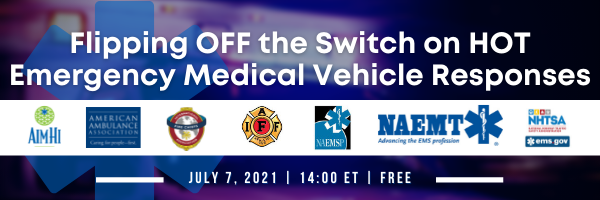Download PDF Letter
March 24, 2022
The Honorable Xavier Becerra
Secretary of Health and Human Services
Department of Health and Human Services
200 Independence Avenue, SW
Washington, DC 20201
Dear Secretary Becerra:
Ground ambulance service organizations and fire departments continue to struggle financially from the enduring economic effects of the COVID-19 public health emergency (PHE). Our respective members face sharp increases in the costs of fuel, equipment, medical supplies, and staffing as we deal with a severe shortage of paramedics and emergency medical technicians (EMTs) which has been an issue for years but exacerbated by the pandemic. We implore you to help ensure communities around the country have access to 9-1-1 emergency and non-emergency ground ambulance services through the remainder of the PHE and beyond with an infusion of $350 million from returned and/or unspent money in the Provider Relief Fund (PRF).
We greatly appreciate the funding that ground ambulance service organizations and fire departments have already received from the PRF. The funds have been a lifeline for many of our respective members and their ability to continue to serve their communities. However, as the Phase 4 distribution of funds demonstrated, more funding is needed for ground ambulance services. Our members indicate the funds they received in Phase 4 covered approximately 50% of their lost reimbursement and increased costs from July 1, 2020, to March 31, 2021, whereas previous distributions were closer to 88%. We therefore respectfully request an immediate distribution of $350 million or 10% of the annual Medicare expenditure on ground ambulance services.
We request that the funds be distributed in a similar manner as the Tranche 1 distribution from the PRF. The automatic, across-the-board deposit of funding was especially helpful for small and rural ground ambulance service organizations. These rural organizations provide care in underserved areas and are often daunted even by an abbreviated application process. To ensure equity for all communities, we support universal direct deposit.
Additionally, we encourage HHS to make these payments based on the National Provider Identification (NPI) number of the ground ambulance service organization or fire department rather than Tax ID Number (TIN). In the case of moderate and large cities, many municipal departments may share a TIN while maintaining distinct NPIs. Providing these payments according to TIN may unintentionally comingle funds intended for different departments such as fire departments, public health departments, and local government-run hospitals or clinics.
The American Ambulance Association (AAA), International Association of Fire Chiefs (IAFC), International Association of Fire Fighters (IAFF), National Association of Emergency Medical Technicians (NAEMT), and National Volunteer Fire Council (NVFC) represent the providers of vital emergency and non-emergency ground ambulance services and the paramedics, EMTs and firefighters who deliver the direct medical care and transport for every community across the United States.
Our members take on substantial risk every day to treat, transport, and test potential COVID-19 patients, and play a vital role in providing vaccinations to individuals in their homes. Ground ambulance service organizations and fire departments, however, urgently need the additional
$350 million to help offset the increased costs and lower reimbursement resulting from our vital response to the pandemic.
Thank you in advance for your consideration of this request.
Sincerely,
American Ambulance Association
International Association of Fire Chiefs
International Association of Fire Fighters
National Association of Emergency Medical Technicians
National Volunteer Fire Council




.png)
